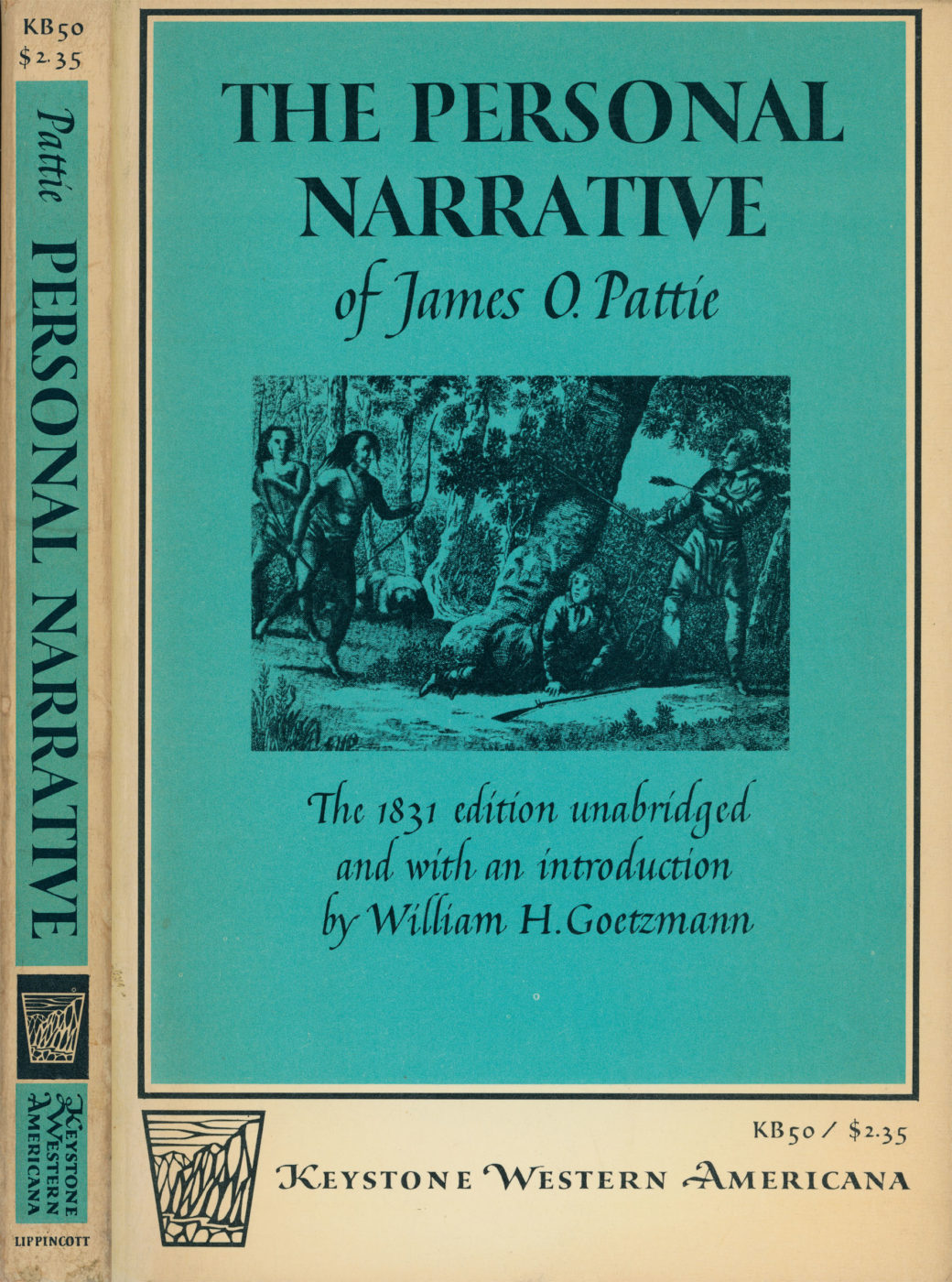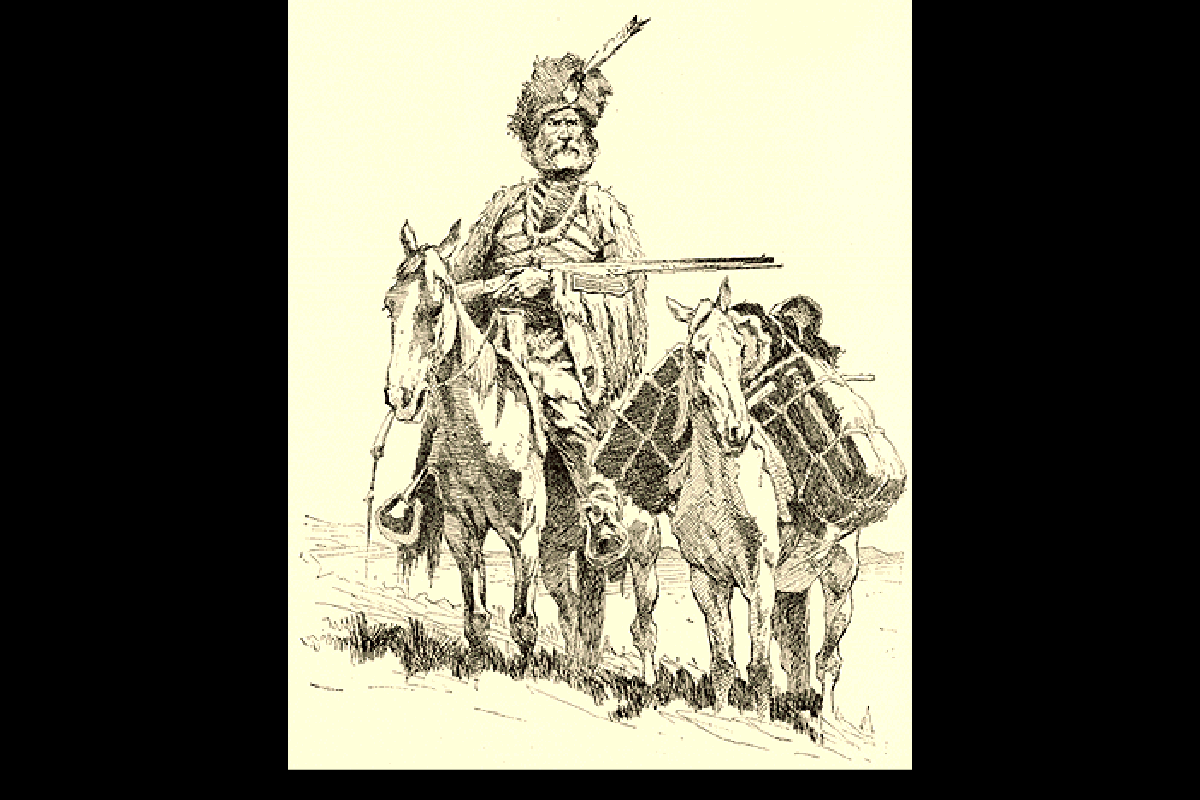Discovering James O Pattie: An American Frontier Story
Have you ever wondered about the people who truly shaped the American West, those who faced immense challenges and lived stories almost too wild to believe? Well, that, is that, something many folks often think about. It's a vast history, full of individuals whose lives read like adventure novels. Today, we're going to talk about James O Pattie, a name that might not be as famous as some, but whose experiences definitely deserve a closer look.
You see, when we discuss figures from the past, sometimes we encounter names like "James" in many different settings. For instance, some discussions might center on writers like James Patterson or James Joyce, exploring their works or the mechanics of their prose. Yet, there are other "James" figures whose impact comes from their actual physical journeys and the real-life tales they leave behind. James O Pattie, quite simply, falls into this latter group.
His story, in a way, offers a peek into the harsh realities and thrilling discoveries of the early 19th-century American frontier. We'll explore who he was, what he did, and why his account matters even now. It's a rather compelling piece of history, so stick around.
Table of Contents
- Who Was James O Pattie?
- Early Life and Setting Out
- The Trapping Expeditions
- Adventures in the Southwest
- The Narrative's Impact
- Legacy and Later Life
- Frequently Asked Questions About James O Pattie
Who Was James O Pattie?
James Ohio Pattie, often known as James O Pattie, was an American frontiersman, a fur trapper, and a writer of his own adventures. Born in Kentucky, he became one of the key figures whose written account gave people back East a glimpse into the vast, often dangerous, lands of the American Southwest. His life was full of daring moments and difficult times, reflecting the spirit of exploration that moved many during that period. He certainly saw a lot.
Personal Details and Bio Data of James O Pattie
| Detail | Information |
|---|---|
| Full Name | James Ohio Pattie |
| Born | 1804 (likely), near Augusta, Bracken County, Kentucky, USA |
| Died | Circa 1850 (exact date and location uncertain, possibly during a cholera epidemic in Missouri) |
| Nationality | American |
| Occupation | Fur Trapper, Explorer, Author |
| Known For | "The Personal Narrative of James O. Pattie of Kentucky" |
| Key Explorations | Parts of present-day New Mexico, Arizona, California, and Mexico |
Early Life and Setting Out
James O Pattie grew up in Kentucky, a place that, even then, was considered part of the frontier. His family had moved there, looking for new chances. The West, so to speak, was always calling. In 1824, when he was around twenty years old, Pattie decided to join his father, Sylvester Pattie, on an expedition. They planned to head to Santa Fe, a well-known trading hub in what was then Mexican territory. This trip was, for many, a big step into the unknown.
Their initial goals were simple: trade and perhaps find new opportunities. They traveled with a group, facing the usual challenges of such a long journey. The land was harsh, and encounters with various groups of people, some friendly, some not, were common. This early experience really set the stage for the incredible adventures that would follow. It taught him, you know, a lot about survival and dealing with unexpected situations.
They arrived in Santa Fe, which was a bustling place for commerce, but they quickly realized that the fur trade offered more promise than just general trading. This realization shifted their focus, leading them down a path that would see them become some of the earliest American trappers and explorers in the far Southwest. It was a time of big risks, and big potential rewards, so it goes.
The Trapping Expeditions
After their arrival in Santa Fe, the Patties, father and son, quickly got involved in the lucrative, yet very dangerous, fur trade. They joined various trapping parties, venturing into areas that few Americans had ever seen. Their work involved catching beaver, which were highly prized for their pelts back in the Eastern markets and in Europe. This work was incredibly hard, requiring a lot of skill and toughness.
One of their first significant expeditions took them along the Gila River, which flows through parts of present-day New Mexico and Arizona. This trip was marked by encounters with Native American groups, some peaceful, others hostile. They also faced starvation, extreme weather, and the constant threat of losing their valuable furs to theft or spoilage. It was a really tough way to make a living, very demanding.
They continued their trapping efforts, moving through different river systems. These were not just hunting trips; they were also acts of exploration. Each river, each mountain range, presented new challenges and new sights. The landscape was vast and often unforgiving, demanding a lot from those who tried to live off it. James O Pattie, you could say, learned the land intimately through these experiences.
The fur trade, while profitable, was also highly competitive. Trappers from different nations, and sometimes even from different American groups, would often clash over trapping grounds. This added another layer of danger to an already risky profession. Pattie's narrative, you know, captures some of these tense moments, showing the constant need for vigilance and quick thinking.
They also faced issues with Mexican authorities, who sometimes viewed American trappers with suspicion, seeing them as encroaching on their territory or violating trade laws. This led to arrests, imprisonment, and the confiscation of their furs and equipment, which was a devastating blow for the trappers. Pattie and his father, in fact, spent time in a Mexican prison, which was a very difficult experience for them both.
Despite these setbacks, their determination to find new trapping grounds pushed them further into uncharted lands. These expeditions, though driven by economic motives, contributed significantly to the geographical knowledge of the American Southwest. They were, in a way, mapping the land with their footsteps, and their traps. It's quite something, when you think about it.
Adventures in the Southwest
James O Pattie's adventures truly stand out because of the sheer scope of his travels. After leaving Santa Fe, his journeys took him across vast deserts and towering mountains. He was one of the first Americans to travel extensively through what we now call Arizona, following the Gila River all the way to its mouth at the Colorado River. This was a really big deal, as few had made that trip before him.
From there, his path led him to California, a land that was, at the time, still very much under Mexican rule. He traveled through various parts of California, experiencing its different climates and landscapes. His descriptions of the missions, the Spanish settlements, and the indigenous populations provide a rare early American perspective on this region. He saw a California very different from what it is today, obviously.
During his time in California, Pattie and his companions found themselves in some truly desperate situations. They were often without supplies, facing hunger and sickness. There was one instance, for example, where he was tasked with vaccinating the native populations against smallpox, a deadly disease that had ravaged communities. This unexpected role shows a different side to his character, a willingness to help, even in strange circumstances.
His travels also included a period of imprisonment in San Diego, where he and his group were held by Mexican authorities who suspected them of being spies. This was a common fear among the Mexican officials, given the increasing American presence in the region. The time spent in prison was harsh, and it deeply affected Pattie, contributing to his often-critical view of Mexican governance in his later writings. It was, you know, a very trying time for him.
The journey back East was just as challenging. He returned through Mexico, facing more hardships and dangers. The sheer distance covered, and the variety of experiences he had, truly make his story remarkable. He didn't just pass through these places; he lived in them, interacted with them, and survived them. For someone looking for a real-life adventure, his story certainly delivers.
His time in the Southwest and California provided him with a unique set of observations. He saw the land, its people, and its challenges with his own eyes. This direct experience gave his later written account a raw authenticity that was rare for its time. It's a very personal look at a pivotal moment in American expansion, so it is.
The Narrative's Impact
Upon his return to the United States in 1830, James O Pattie's experiences were, frankly, astonishing to many. He found a sympathetic listener in Timothy Flint, a writer and editor who helped him put his story into words. The result was "The Personal Narrative of James O. Pattie of Kentucky," published in 1831. This book became an important piece of American literature, offering a first-hand account of the far West.
The narrative was written in the first person, giving readers a direct connection to Pattie's thoughts and feelings. It detailed his trapping expeditions, his encounters with Native Americans, his imprisonment in Mexico, and his journey to California. The book was, in a way, a window into a part of the continent that was still largely unknown to the general American public. It gave them a real sense of what it was like out there.
Flint, as the editor, shaped Pattie's spoken accounts into a readable form. While some historians debate how much Flint might have embellished or altered the story for dramatic effect, the core experiences and geographical details are widely accepted as authentic. The book was popular, capturing the imagination of a nation increasingly interested in westward expansion. It was, for many, a thrilling read.
The "Personal Narrative" served several purposes. For one, it provided valuable geographical information about the Southwest, which was still largely unmapped by Americans. It described rivers, mountain passes, and landscapes that would become important routes for later explorers and settlers. This was, you know, very practical information.
Secondly, it contributed to the growing body of literature about the American frontier. Stories of trappers, explorers, and pioneers helped shape the national identity and fueled the idea of Manifest Destiny. Pattie's account, with its tales of daring and survival, fit right into this developing narrative. It really painted a picture for people.
The book also offered insights into the lives of Native American tribes and Mexican communities in the Southwest, though these descriptions were, of course, from Pattie's own perspective and reflected the biases of his time. Nevertheless, they provided some of the earliest American observations of these cultures. It's a source that, in some respects, tells us about more than just Pattie himself.
For historians, the narrative remains a valuable primary source for understanding the fur trade, early American exploration, and the interactions between different groups in the Southwest during the 1820s. It's a unique document, offering a very personal look at a very significant period. You could say it's a bit like a time capsule.
You can learn more about early American exploration on our site, which gives a wider context to figures like Pattie. Also, if you are interested in the broader history of the American West, you might want to check out this page for more stories and details.
Legacy and Later Life
James O Pattie's "Personal Narrative" is his most lasting contribution. The book continues to be studied by historians and read by those interested in the American frontier. It gives us a window into a specific moment in time, showing the challenges and the spirit of the early 19th-century West. His story, you know, really stuck with people.
After the publication of his narrative, Pattie's later life is less clear. Historical records are a bit vague about what happened to him. Some accounts suggest he might have returned to the West, perhaps continuing his trapping activities. Others believe he settled down somewhere in Missouri. It's one of those historical mysteries, unfortunately.
The most widely accepted theory is that James O Pattie died around 1850, possibly during a cholera epidemic that swept through Missouri. This epidemic claimed many lives, and it's plausible that he was one of its victims. His exact burial place and the precise circumstances of his death remain unknown, adding to the somewhat elusive nature of his later years. It's a rather sad end for such an adventurous person.
Despite the uncertainty surrounding his final years, Pattie's narrative secured his place in American history. He was not just a trapper; he was a storyteller, someone who brought the raw, untamed West to the homes of people far away. His experiences helped shape the popular image of the American frontiersman: resilient, adventurous, and always pushing the boundaries. It's a powerful image, really.
His narrative is often compared to other early accounts of the West, like those of Jedediah Smith or Kit Carson, though Pattie's is unique in its detailed, first-person style. It provides a human perspective on the vastness and dangers of the frontier. It's a book that, quite simply, transports you back in time. You can get a sense of the challenges they faced.
Today, his name, James O Pattie, might not be instantly recognizable to everyone, but his contributions to understanding the early American Southwest are significant. His narrative remains a testament to the incredible courage and endurance required to explore and survive in those

The Personal Narrative of James O. Pattie – Ismar David Archive

James Ohio Pattie - True West Magazine

Pattie James MSN, PMHNP-BC | Harmony Bay Wellness